Image Archive

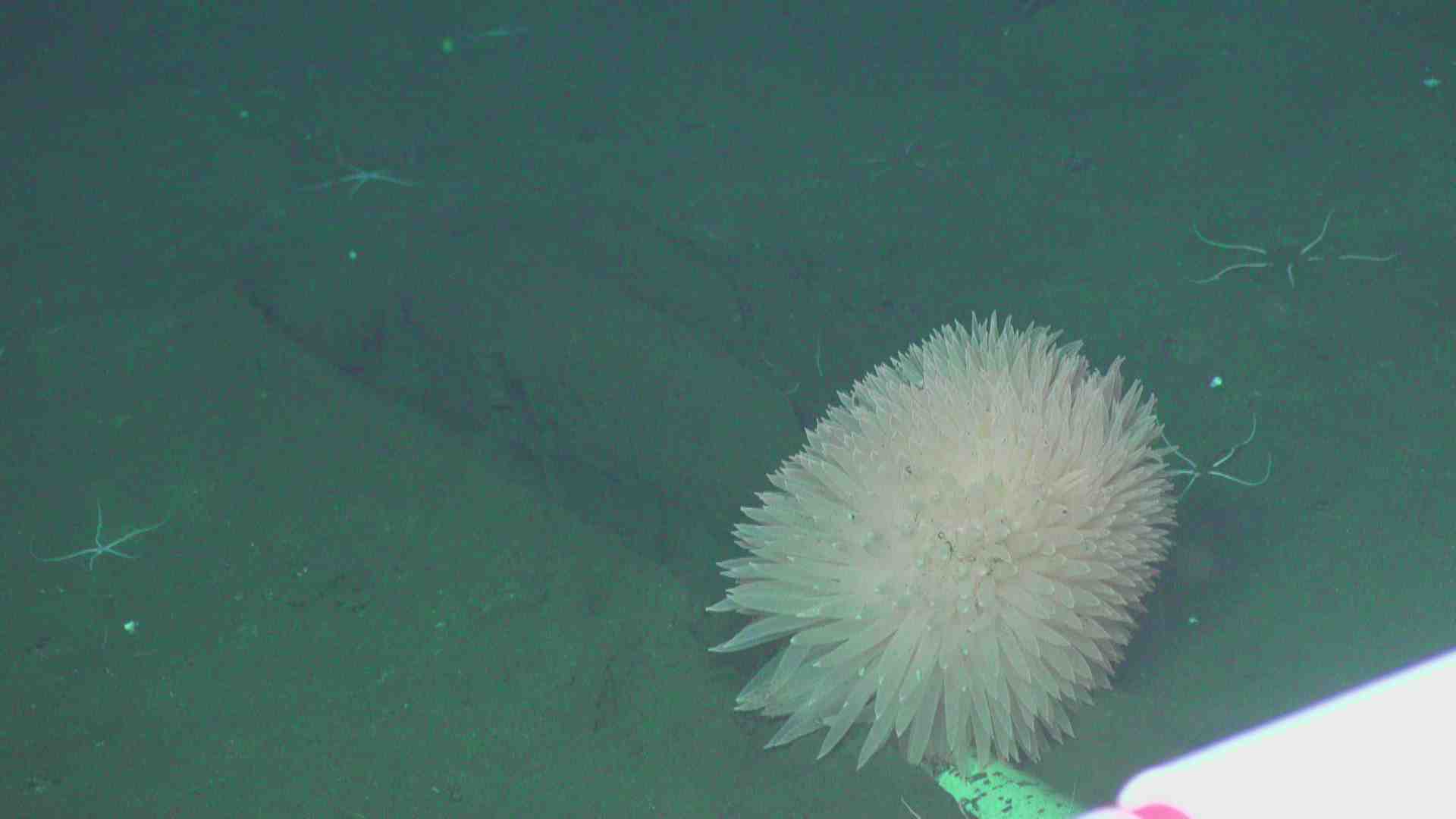







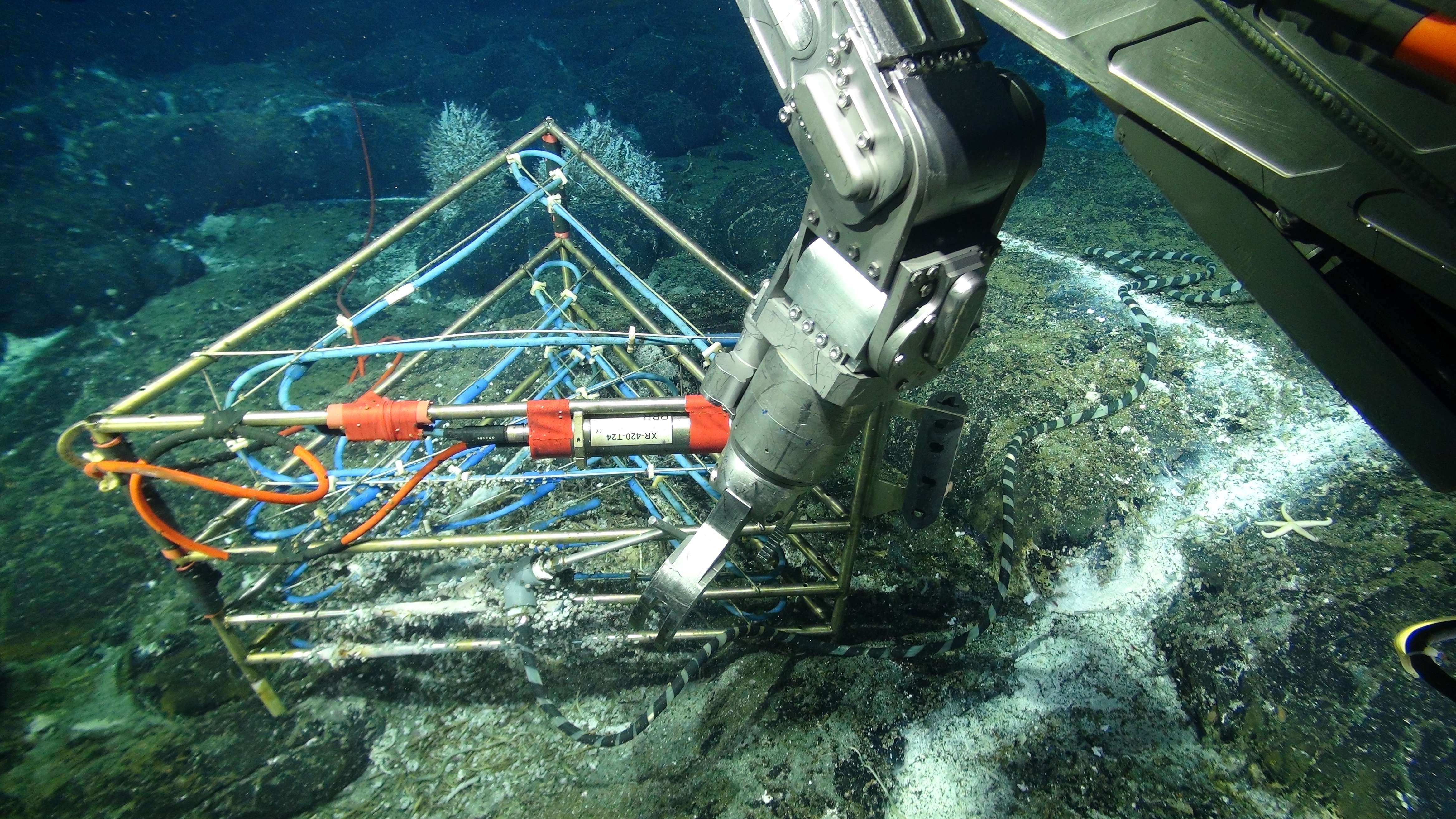



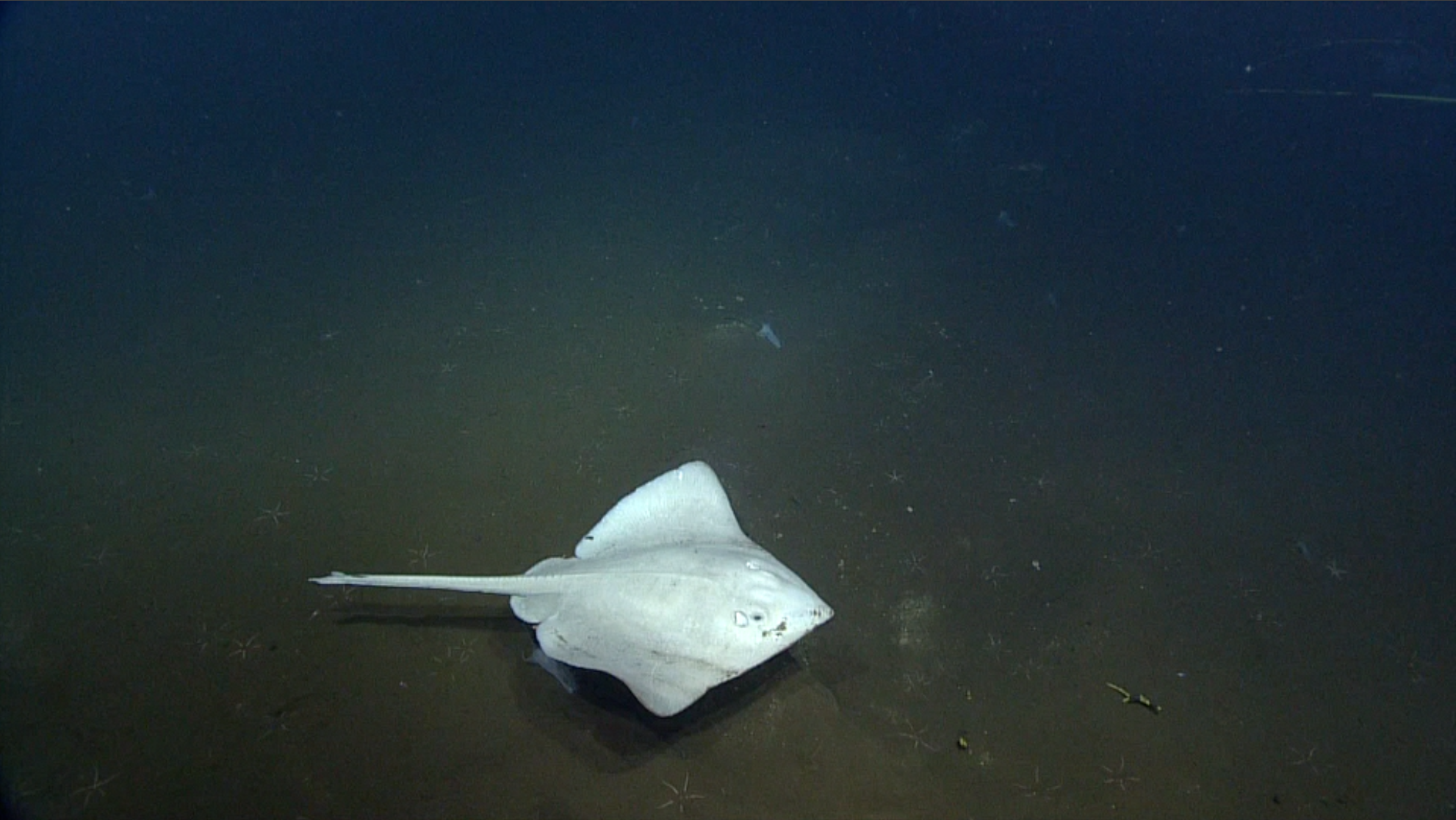





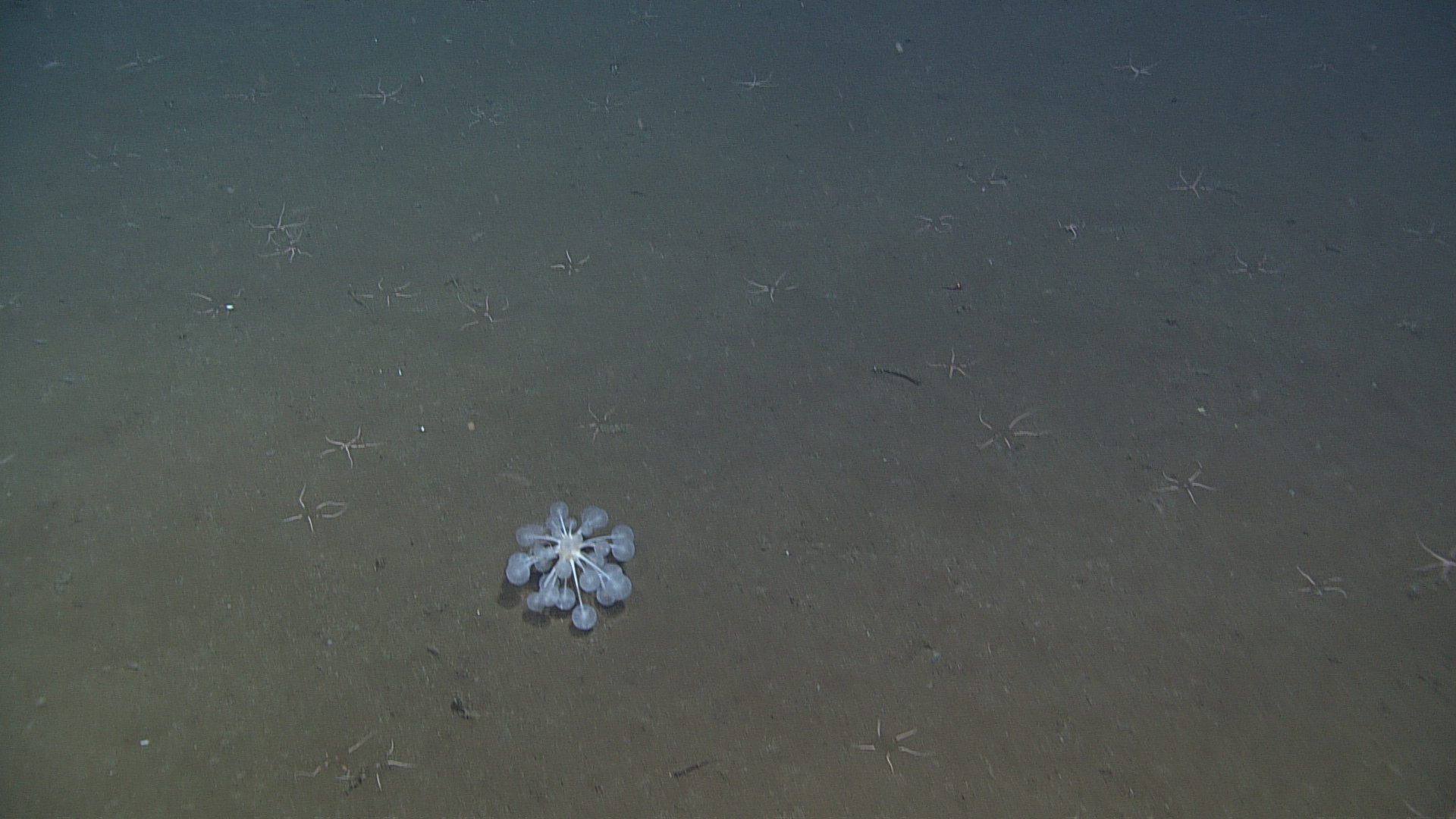
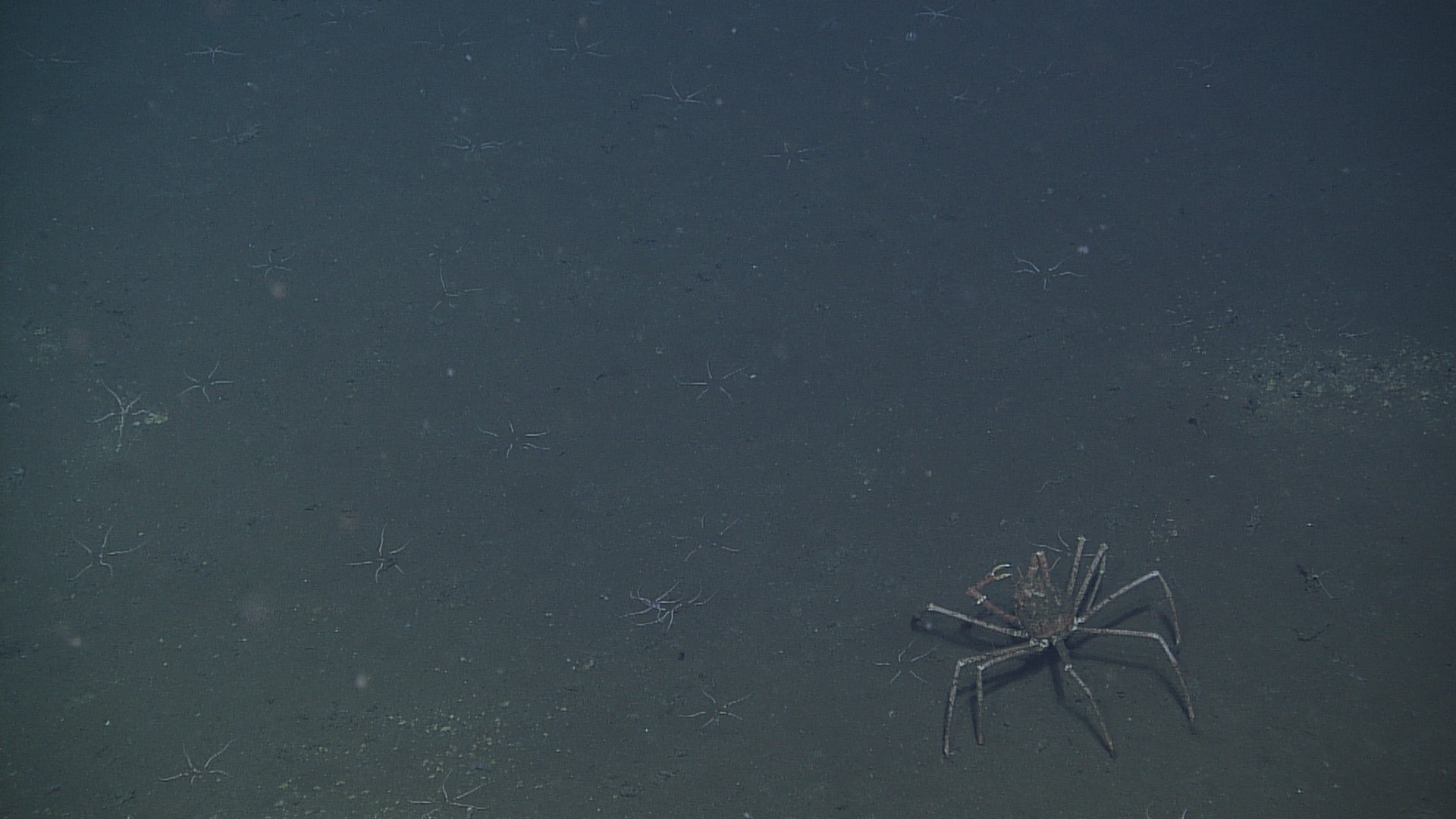

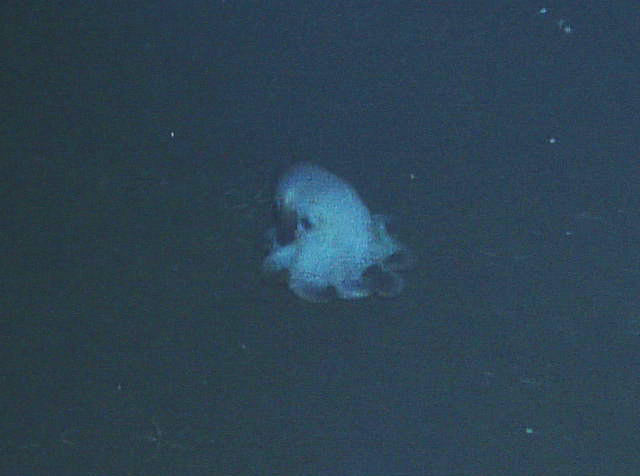




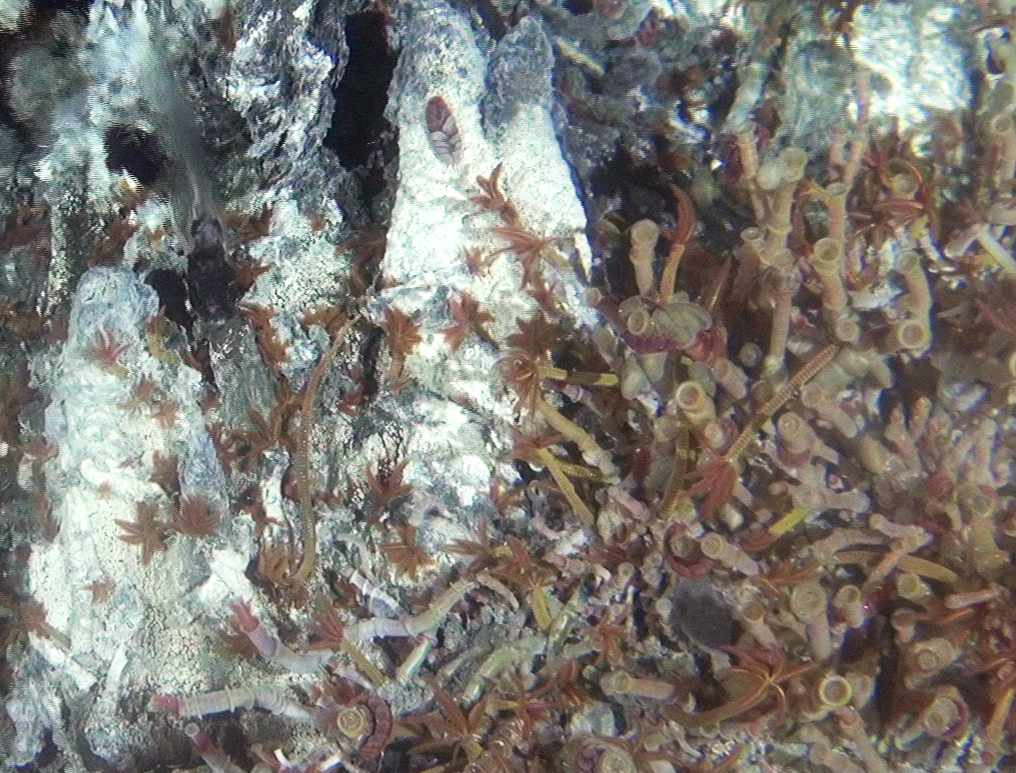

A blob sculpin (Psychrolutes sp.) aka blobfish, at International District on Axial Seamount during VISIONS'20. Credit: UW/NSF-OOI/WHOI V20.

A pom-pom anemone at Axial Base, moving around the legs of the HPIES instrument. Photo Credit: UW/NSF-OOI/WHOI; V19

A Graneledone octopus peeking at Jason around the side of the Axial Base HPIES instrument. Photo Credit: UW/NSF-OOI/WHOI; V19

A rattail fish swimming near the Axial Base junction boxes during a CTD deployment. Photo credit: UW/NSF-OOI/WHOI; V19

Organisms colonize the outer walls of the 16 m-tall hydrothermal edifice called El Guapo. The community structure changes with height above seafloor. Here, limpets, red scale worms and blue protists (ciliates) colonize the outer sulfide walls of the structure. Credit: UW/NSF-OOI/WHOI, V18.

Near the summit of the ~16 m-tall El Guapo chimney, sulfide worms, and tubeworms colonize the younger part of the new sulfide growth. Credit: UW/NSF-OOI/WHOI, V18.

Healthy tube worms grow along a venting fracture in the 2011 glassy lava flow at the summit of Axial Seamount. Credit: UW/OOI-NSF/WHOI; J2-980; V17.

A dense colony of tube worms awash in warm diffusely venting fluids grow on the April 2011 lava flow at the summit of Axial Seamount. UW/OOI-NSF/WHOI; J2-980; V17.

A small cluster of healthy Ridgeia tube worms grow near Skadis' Cauldron, a highly active snowblower in 2011. Credit: UW/OOI-NSF/WHOI; J2-980; V17.

A 3D temperature (thermistor) array housing 24 sensors rests above a small diffuse flow site a few meters away from the actively venting black smoker edifice called Mushroom in the ASHES hydrothermal field on Axial Seamount. This cabled instrument was designed and built by G. Proskurowski, UW School of Oceanography. Limpets have colonized the frame and cable housing the thermistors. An osmotic fluid sampler is inserted into the diffuse flow site to obtain chemistry coregistered with temperature. Credit: UW/NSF-OOI/WHOI; V16.

A digital still camera (left), mass spectrometer (middle) and a fluid and microbial DNA sampler at the El Gordo vent in the International District Hydrothermal Field measure and sample fluids, animals, and microbes in this active processes within this hydrothermal system to understand linkages amoung seismicity (seismometers extend away from the field), venting and life in this extreme environment. Credit: UW/OOI-NSF/WHOI; Dive J2-212, V16.

Krill surroung the small "cage" housing the cable connection from the Shallow Profiler at Axial Base to the extension cable connecting the Profiler to the power and communications. Credit: UW/OOI-NSF/WHOI, Dive J910, V16.

The float atop the Deep Profiler Mooring at the base of Axial Seamount has become a habitat for schools of fish. Credit: NSF-OOI/UW/CSSF; ROPOS Dive R1860, V15.

A skate swims gently past ROPOS at the base of Axial Seamount, greater than 9000 ft beneath the ocean's surface. Credit: UW/NSF-OOI/CSSF; ROPOS DIve R1841, V15.

A huge rattail, ~ 5 feet in length, swims slowly in front of the ROV ROPOS near the International District Hydrothermal Field at a depth of 5000 ft beneath the ocean's surface. This area has a higher abundance of these fish than observed elsewhere in the caldera, perhaps because of the larger size of the vent field and hence food source. Credit: UW/NSF-OOI/CSSF; ROPOS Dive R1729; V15.

Pyconogonids are abundant on many sulfide structures in the vent fields within the caldera of Axial Seamount. These 8-legged anthropods are commonly found in areas where venting has stopped, leaving variably oxidized edificies. Here, they are associated with snails an a small scale worm ~ 1 cm; in length. Credit: UW/NSF-OOI/CSSF; ROPOS Dive R1836; V15.

A large red jellyfish swims gently by the ROV ROPOS at Axial Seamount.

An octopus hanging out next to primary node PN3A at Axial Base, 2600 meters deep. Credit: UW/NSF-OOI/CSSF, ROPOS Dive R1742, V14.

An octopus hanging out near primary node PN3A at Axial Base, 2600 meters deep. Credit: UW/NSF-OOI/CSSF,ROPOS Dive 1742, V14.

A bizarre sponge, Chondrocladia lampadiglobus, seen at Axial Base (2600m deep). First seen in 1960 in grainy black and white pictures, it was originally thought to be a Russian listening device by the US Navy, before it was eventually identified as an organism. Photo Credit: NSF-OOI/UW/CSSF, Dive 1739, V14

A spider crab encountered at the Axial Base site (2600m deep) during a cable survey. Photo Credit: NSF-OOI/UW/CSSF, Dive 1739, V14

A sea pen, a colonial marine cnidarian belonging to the order Pennatulacea, seen at the Axial Base site (2600m depth) during a cable survey. Photo Credit: NSF-OOI/UW/CSSF, Dive 1739, V14

A dumbo octopus (Grimpoteuthis) at the Axial Base site at 2600 m water depth. Identified by cephalopod experts Stephanie Bush (MBARI) and Mike Vecchione (Smithsonian) Credit: UW/NSF-OOI/CSSF, Dive R1739, V14.

A close-up picture of the skinny fish seen at 565m depth at the Axial Base site. It has been tentatively identified as Bathylychnops exilis or a Paralepidid by Brian Sidlauskas and Ben Frable (OSU) Photo Credit: NSF-OOI/UW/CSSF, Dive 1738, V14

A small cranchiid squid at the Axial Base site at 1318 m water depth. Tentatively identified as Taonius by cephalopod expert Stephanie Bush (MBARI). Credit: UW/NSF-OOI/CSSF, ROPOS Dive R1738, V14.

A closeup view of a dinner plate jelly seen at Axial Base during dive 1737. Photo Credit: NSF-OOI/UW/CSSF, Dive 1737, V14

A close-up portrait of a black rattail fish at the Axial Base site, at 2603 meters depth. Photo Credit: NSF-OOI/UW/CSSF; Dive 1736; V14.

A close up of animals, including palm worms and tubeworms, on the hydrothermal chimney called Mushroom in the ASHES hydrothermal field. The image is a frame grab from video streamed during testing of the OOI-RCA high-definition video camera built by the Applied Physics Lab at the University of Washington. The camera has been at this site for 1 year. Credit: UW/NSF-OOI/ V14.
- Anemone
- Animal
- Arthropod
- ASHES
- Axial
- Axial Base
- Axial Biology
- Axial Caldera
- Bacteria
- Basalt Lava
- BEP
- Biofouling
- biolgoy
- Biology
- Camds
- Camera
- Camhd
- Central Caldera
- Ciliates
- Cnidaria
- Coastal Biology
- Crab
- Deep Profiler Mooring
- Dive Highlights
- Eastern Caldera
- Echinoderms
- Endurance Array
- Engineering Team
- ENLIGHTEN 10
- Exploratorium
- Fish
- Geology
- HD Camera
- HPIES
- Hydrate Ridge
- Hydrates
- Hydrophone
- Hydrothermal Vents
- Illustration
- Inshore 80 Meters
- Instrument
- International District
- J-BOX
- Jason
- Jellyfish
- Junction Box
- K12
- Lava
- Mollusk
- Moorings
- Nodes
- Nudibranch
- Octopus
- OOI
- Oregon Offshore
- Oregon Offshore 600 m
- Oregon Shelf
- Oregon Slope Base
- People
- PN1B
- PN1D
- Polychaetes
- PPSDN
- Primary Node
- RASFL
- ROCLS
- ROPOS
- ROPOS Dives
- ROV Team
- RV Revelle
- RV Sikuliaq
- RV Thompson
- Salp
- Sample
- SC13
- Science Team
- Sea Cucumber
- Sea Star
- Sea Urchin
- Seafloor
- Seismometer
- Sensors
- Shallow Profiler Mooring
- Shark
- Shipboard
- Shore Station
- Slope Base
- Smoker
- Soft Coral
- Southern Hydrate Ridge
- Sponge
- Squid
- Students
- Students & Guest Participants
- Tmpsf
- Tubeworms
- VISIONS 11 Leg 1
- VISIONS 11 Leg 2
- VISIONS 11 Viewers
- VISIONS 13
- VISIONS 14
- VISIONS 15
- VISIONS 16
- VISIONS 17
- VISIONS 18
- VISIONS 20
- VISIONS 22
- VISIONS 23
- Visualization
